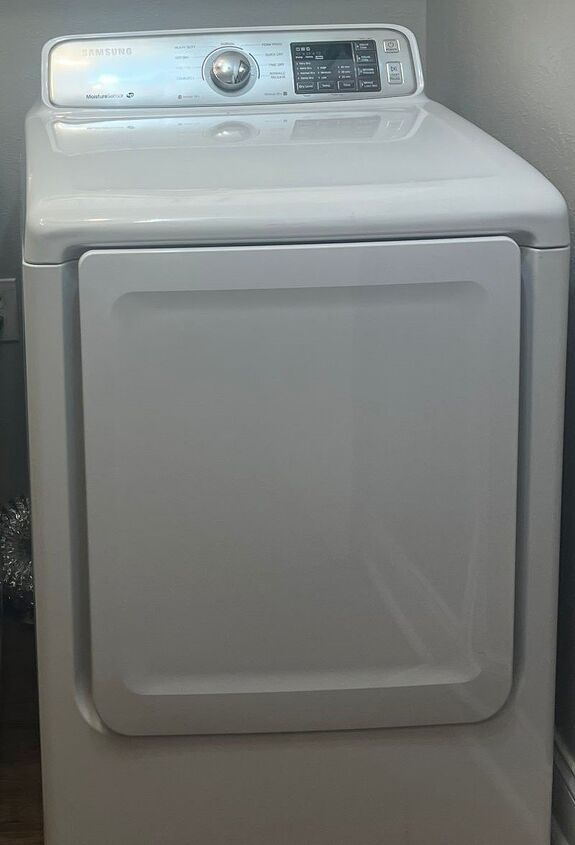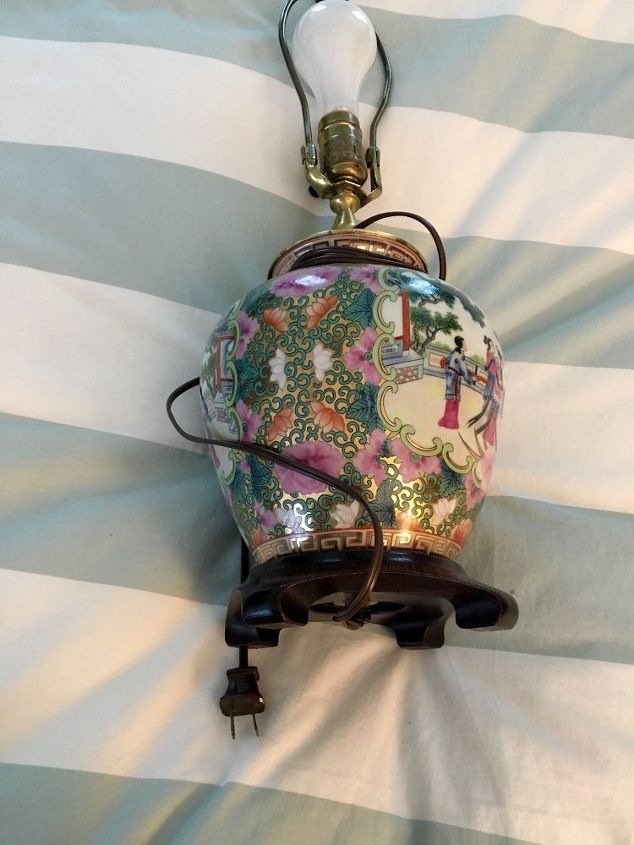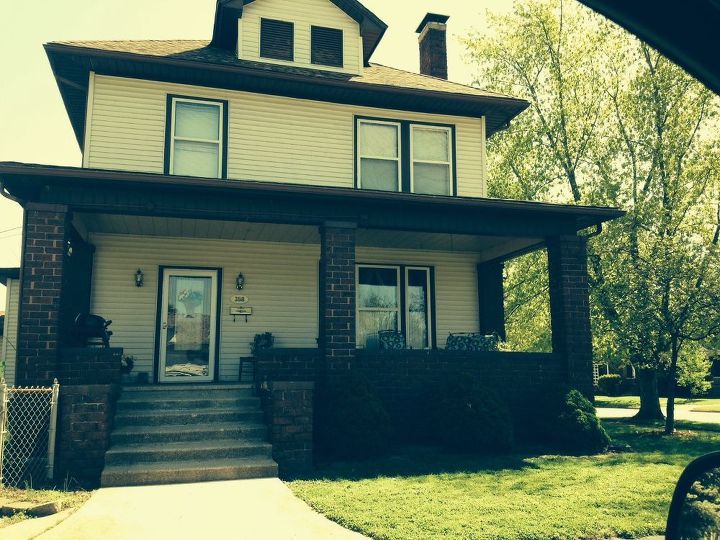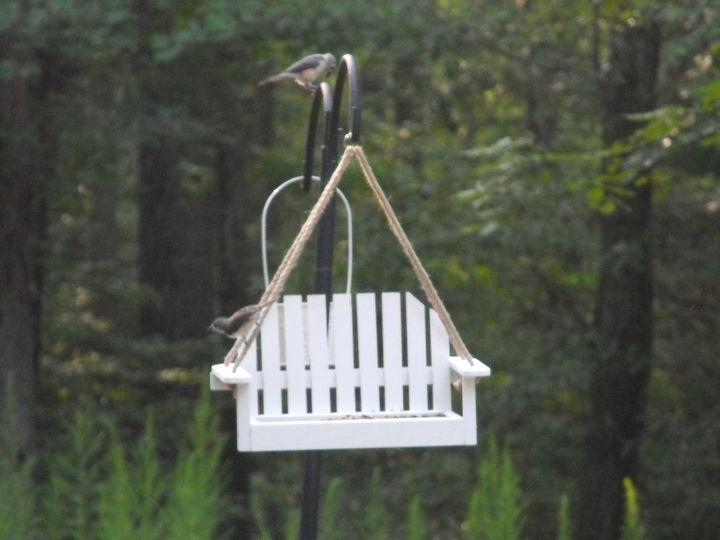I have stucco on my home and I have a gap where the foundation and the stucco meets.

-
The foam spray can actually be dangerous to use...if fumes ever build up inside the house while you are using it and you have gas appliances like a furnace or water heater, it can cause a firm. You'd be better to try a product like Quickcrete concrete repair in a tube...you'll find it at Depot or Lowes in the concrete section...yellow & black tube I think....just need a caulk gun. Wear a rubber glove as you do it...if it's a deep crack....fill it in two passes. Let is sit up for about 5 minutes and then lightly smooth it out with you're gloved finger....I'm cheap so I often wrap a store plastic bag around my finger. DAP also makes a concrete repair product and you'll find that in the caulk aisle of the paint section. I prefer the Quickcrete as it seems to hold up better....hope that helps!
 HandyANDY - Handyman & All Repairs, LLC
on Sep 19, 2011
Helpful Reply
HandyANDY - Handyman & All Repairs, LLC
on Sep 19, 2011
Helpful Reply -
-
Gordon, I am not a stucco expert. I know just enough about it to be dangerous. However, I do know that proper installation of stucco in the majority of applications requires a "system" behind it that allows for drainage. I would be very hesitant to advise you to seal that gap you are referring to without some solid advice from an exterior expert in your area. It is not supposed to be open to the interior to allow runners or bugs to easily find their way in... but "plugging" it without any concern for drainage will lead to long-term problems. Tim
 Hewitt Remodeling Services LLC
on Sep 19, 2011
Helpful Reply
Hewitt Remodeling Services LLC
on Sep 19, 2011
Helpful Reply -
-
,,You can create weep holes to this application if necessary,,,,,no do not use SPRAY FOAM,,,,,aggregate with latex bonding ,,,,makes for elasticity such as described above in tube ,,,put (backer rod ),,,its a foam round piece that you packdown in crag to keep from putting more than you need dont put more aggregate/latex ,,,caulking,,it doesnt need to be more than 3/8"`s to 1/2"x1/2",,,any more than that and it was not designed to expand and contract much more ,,,,,READ LABEL,,,,
 Wally Daly ,,Mastercarpenter,artist
on Sep 21, 2011
Helpful Reply
Wally Daly ,,Mastercarpenter,artist
on Sep 21, 2011
Helpful Reply -
-
No do not fill this gap. Reason being you may have what is called a drainage system. This system allows for a space behind the stucco to let any moisture that may occur due to poor sealants and window leaks. If you seal this gap, you will trap water and cause issues. If you know for sure that you do not have a moisture drainage system installed. you can use foam, but use the slow expanding type that you use for around windows. Keep in mind that the bugs can still eat through the foam. Using a caulking sealant is much more effective against critter entry.
 Woodbridge Environmental Tiptophouse.com
on Sep 21, 2011
Helpful Reply
Woodbridge Environmental Tiptophouse.com
on Sep 21, 2011
Helpful Reply -
-
Can you post a pic so we can actually see what you've got? I don't think this has anything at all to do with drainage but let's see it!
 HandyANDY - Handyman & All Repairs, LLC
on Sep 21, 2011
Helpful Reply
HandyANDY - Handyman & All Repairs, LLC
on Sep 21, 2011
Helpful Reply -
-
It is just where the stucco and the ground meets. It's the same way where the vinyl siding meets the ground. I know that I have seen birds going up in between my vinyl siding and frame of house to get the insulation to build a nest. The picture that I posted is not from my home, but something like it. As you can see, there is a gap from the stucco and ground. Underneath the stucco, there is a gap where birds and insects go, I want to use the spray foam in a can to seal it off a little more.
 Gordon F
on Sep 22, 2011
Gordon F
on Sep 22, 2011
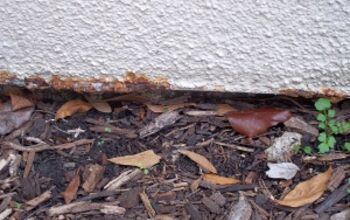 Helpful Reply
Helpful Reply -
-
I would clear away some of the soil but maintain a grade away from the house. Then, put step flashing on a piece of wood or composite and place it at the bottom of the stucco. This will keep the draining in tact and close off the access to critters.
 DannieBuilds
on Sep 22, 2011
Helpful Reply
DannieBuilds
on Sep 22, 2011
Helpful Reply -
-
Dannie, I don't have anything around the bottom part of my home. I have nothing close to the bottom of the stucco. I just have pine straw on the bottom.
 Gordon F
on Sep 22, 2011
Helpful Reply
Gordon F
on Sep 22, 2011
Helpful Reply -
-
OK, from what I see you have a hard coat stucco system installed. The rust is the metal tracks they use to finish the edges. The reason for the rust is that the stucco is to close to the surface or buried into the soil and is not allowed to dry out. Dannie Builds is right about maintaining grade. You should have at least 6 inches of clearance ideally more from the top of the soil to the bottom of the stucco surface. However on your home we still do not know what kind of wall system you have. If you knock on it with your knuckles does it sound kind of hollow? Or does it sound like your knocking on a cement wall? If it sound hollow you have a EIFS system. A Exterior Insulating Finishing System employees a foam board that is either mechanically or adhesive fastened to the wall. Before they install the foam boards and depending if you have a drainage system or a barrier type of system in which no drainage system is installed how they finish the edges are determined. With a drainage system they use a plastic J channel with little holes in the bottom of the J in which the foam boards are placed into after fasting the J onto the wall. With a barrier system, they fasten a fiberglass mesh called "Detail Mesh" that is after the foam is connected to the wall is wrapped around and cemented onto the foam which protects it from damage as well as a bunch of other things that I will not go into at this time. Quite often because its difficult to do, or because the installing contractor is trying to cut corners they fail to either to use the mesh, or they do not cement over it where you cannot see. The result in effect is a very soft edge that quite often birds, insects and rodents chew into to nest. On many homes woodpeckers make nests in the thicker edges on trims. They as woodpeckers do knock on the wall to listen for hollow areas in order to find insects. If your home has them this attracts them to it. Once they knock a hole into the wall they dig out the soft foam core and nest. This is a very common complaint with EIFS. In your case the bottom edges of the foam most likely are exposed and it becomes quite easy for ground level insects, birds and rodents to enter and nest. What you need to do is to lower the soil, take a mirror and do a look see to find out if the foam is exposed. If it has become exposed it needs to be cemented closed. If you fail to do this properly, you will being to see decay of the lamina (surface) of the finish as it becomes damaged from behind. A good stucco company can do this repair for you. If your handy you can also do this yourself using a Type II Portland cement being careful not to get any on the front finished surface edges. you cannot caulk, or foam this closed. If there is a large hole where the critters are nesting, you need to remove them from the area or they will attempt to come back. Once that has been achieved, you can fill the offending hole with a non-expanding foam, let it dry and then cover with the cement. If you need additional advice or would like to speak to me, feel free to contact me from my profile or send me a message and I can help you out more on this subject.
 Woodbridge Environmental Tiptophouse.com
on Sep 22, 2011
Helpful Reply
Woodbridge Environmental Tiptophouse.com
on Sep 22, 2011
Helpful Reply -
-
Woodbridge, I just found a pic from the Internet. I do not have rust spots on my stucco. I just have issues with rodents and stuff going up the space of the stucco and foundation. It's where the lip of the stucco meets the foundation.
 Gordon F
on Sep 22, 2011
Helpful Reply
Gordon F
on Sep 22, 2011
Helpful Reply -
-
HI Gordon, why not send a pic of what you have? The first problem for me, is that the stucco is too close to the ground....generally, and I'm sure the others will comment, you want to see 4 to 6 inches clear from the ground...so in my mind, the stucco should be cut back towards the slab and the bottom edge finished and sealed with some weep holes for drainage. Stucco finished too close to the ground with or without and open edge becomes a highway for bugs and termites...just my thoughts.
 HandyANDY - Handyman & All Repairs, LLC
on Sep 23, 2011
Helpful Reply
HandyANDY - Handyman & All Repairs, LLC
on Sep 23, 2011
Helpful Reply -
-
Spot on, Handy Andy! You can't fix it if you can't see it. And equally on target that there is a minimum space required between the grade of the soil and any finish product, stucco, wood or cement board siding. Some concern, too, that there are sufficient gaps between sill framing and foundation that plants and critters can access - rim sill and sheathing should be a barrier there whatever the exterior finish.
 Bob and RodMan S
on Sep 23, 2011
Helpful Reply
Bob and RodMan S
on Sep 23, 2011
Helpful Reply -
-
I would stay away from filling in with foam if you have to fill it in. I would stick with some sort of caulk or concrete. The reason being is termites. There is a reason that foam board backing is not used behind stucco at the grade or below level...termites are attracted to it and will go in and then they will be in your wood structure.
 Seth F
on Sep 23, 2011
Helpful Reply
Seth F
on Sep 23, 2011
Helpful Reply -
-
At this point all the ideas are great and all apply to different types of stucco systems. Stucco is a generic term used and does not explain at all what type of siding you have. If you have a Hard coat or one coat system its cement over wire over plywood sheathing. Two coat system pretty much the same, EIFS system uses EPS board with a fiberglass wrap and mesh as the reinforcement to hold the cement finish. So can you tell us if you have foam boards behind the wall or is it just plywood? Do you have metal edges on bottom, plastic, or nothing? In any regard, All siding regardless of what it is, Stucco, wood, vinyl should never be in direct contact with the soil. The higher the space between the two the better. As far as what to use to fix this issue is highly dependent on what kind of system that is installed. Not sure provide us with a photo, use a mirror to reflect up under so we can do a look see. But at this point without having a better description of exactly what you have every response is just a guess.
 Woodbridge Environmental Tiptophouse.com
on Sep 23, 2011
Helpful Reply
Woodbridge Environmental Tiptophouse.com
on Sep 23, 2011
Helpful Reply -
-
AS Woodbridge put its...guessing game. Back and forth. With no. Solution and or. foward motions
 Wally Daly ,,Mastercarpenter,artist
on Sep 23, 2011
Helpful Reply
Wally Daly ,,Mastercarpenter,artist
on Sep 23, 2011
Helpful Reply -
Related Discussions
Can I fill the large gap between the foundation and my stucco siding?
I've noticed, while installing a french drain, a large 3" gap between my stucco wall and the foundation that extends the length of the house. Where the stucco ends th... See more
Would you rather wash and fold laundry or clean the dishes?
Given the choice, would you prefer washing the dishes or doing laundry? Share your preferences and insights!
What can I do about wood smoke coming into my house?
I need help. My back door neighbor heats with a wood stove all winter. They are downhill from me. Almost all their smoke makes its way into my house, causing headache... See more
How to tighten a lamp that is looose?
How to tighten lamp that is loose?
How can I inexpensively add some "wow" to my very brown/tan house?
My house is 100 years old and rock solid but it is bland. It needs someone's creative suggestions!
Does anyone have any good suggestions on how to keep squirrels out of my bird feeders?
I have tried the crushed red pepper in the bird seed, and have tried putting vaseline on the pole that holds the feeders....any other suggestions? I will at times hav... See more

